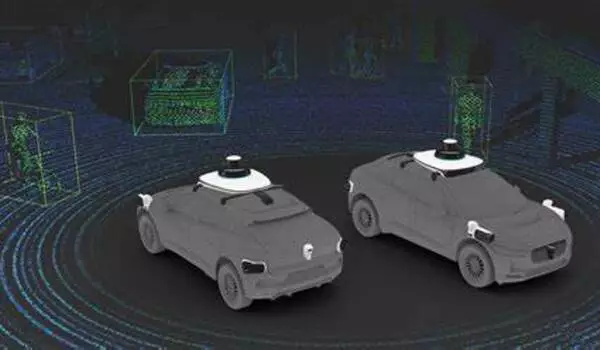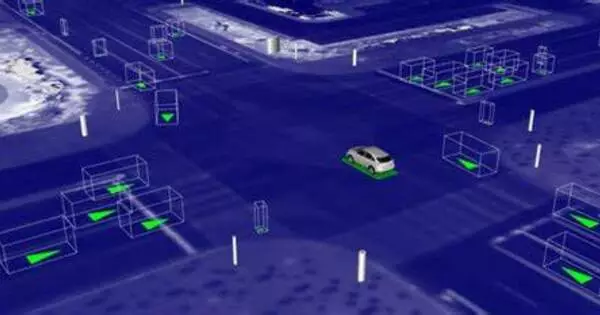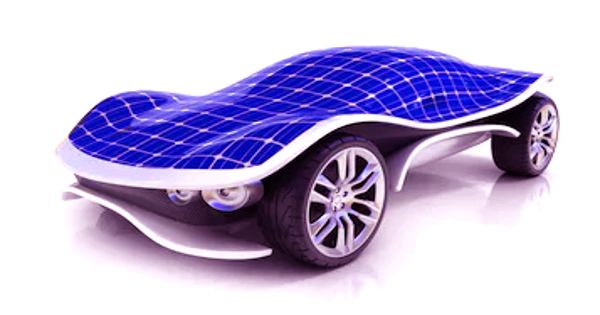Real driverless automobiles are tested in a virtual environment, which is an important stage in the development and validation of autonomous vehicle technology. Researchers have created new software to aid in the creation, evaluation, and demonstration of safer driverless vehicles. The Vehicle-in-Virtual-setting (VVE) technique allows driverless cars to be tested in a completely safe setting.
Ohio State University researchers have created new software to aid in the creation, evaluation, and demonstration of safer autonomous, or driverless, automobiles. The Vehicle-in-Virtual-Environment (VVE) technique, described by Bilin Aksun-Guvenc, co-author of the study and professor of mechanical and aerospace engineering at Ohio State, permits testing of autonomous cars in a completely safe environment.
Consider a driverless car in the middle of an empty parking lot. Although it is driving, it is reacting to software input rather than the real environment, which tells the car what the road looks like and what automobiles, pedestrians, and hazards it may encounter along the way.
Our future depends on being able to trust any and all road vehicles with our safety, so all of our research concepts pertain to working towards that goal.
Aksun-Guvenc
“We’re able to make the vehicle think it’s driving on actual roads while actually operating on a large open, safe test area,” Aksun-Guvenc explained. “This ability saves time, and money, and there is no risk of fatal traffic accidents.”
The study, published recently in the journal Sensors, found that by immersing self-driving machines in a virtual environment, the technique can help the car learn to avoid possible car collisions, increase pedestrian safety, and react to rare or extreme traffic events.
Although autonomous driving technologies have become a much more common sight on the road in the last few years, due to the sheer number of accidents these systems have caused, the way these technologies are tested deserves closer scrutiny, Aksun-Guvenc said.

“Our future depends on being able to trust any and all road vehicles with our safety, so all of our research concepts pertain to working towards that goal,” said Aksun-Guvenc, who is also the co-director of Ohio State’s Automated Driving Lab, a research group founded in 2014 to advance autonomous vehicle technologies.
Current methods for demonstrating autonomous car functions entail first testing software and technology in simulations, then on public roads. However, according to Aksun-Guvenc, this strategy essentially transforms other road users into involuntary participants in these driving experiments, and such hazards can make the entire development process costly, inefficient, and even dangerous for both drivers and pedestrians.
To address the constraints of these erroneous judgments, researchers in this work substituted the output of high-resolution sensors in a real car with simulated data in order to connect its controls to a very realistic 3D environment, similar to giving the machine a VR headset or virtual reality glasses. Researchers were able to demonstrate that the automobile responds in real time as if the virtual world were its true surroundings after feeding the data to the autonomous driving system’s computers and syncing the car’s real motions with the simulations’.
But what makes their software especially powerful, said Levent Guvenc, co-author of the study and also co-director of the Automated Driving Lab, is the strength of how flexible their virtual environment can be. “When actual senses are replaced by virtual senses, the model can be easily changed to fit any kind of scenario,” said Guvenc.
Because the VVE method can be calibrated to maintain real-world properties while modeling rare events in the virtual environment, it could easily simulate extreme traffic scenarios, such as someone jumping in front of a vehicle, as well as mundane ones, such as pedestrians waiting at a crosswalk, he said.
Furthermore, the software can use Bluetooth to communicate between a pedestrian with a mobile phone and a phone in the test vehicle using a communication app for vehicle-to-pedestrian interaction. The researchers had a pedestrian dart across a simulated road, keeping a safe distance from the test car. However, the Bluetooth connection informed the car that someone was darting right in front of it.
“The beauty of the method is that road users can share the same environment at the same time without being in the same location at all,” Guvenc explained. Although creating these hyper-realistic landscapes takes time, he claims that one technological difficulty their team has overcome is syncing different environments for usage in real-time simulations.
The technology has also been patented by the team. Guvenc would like to see it integrated into traffic standards developed by organizations such as The National Highway Traffic Safety Administration in the future.
















